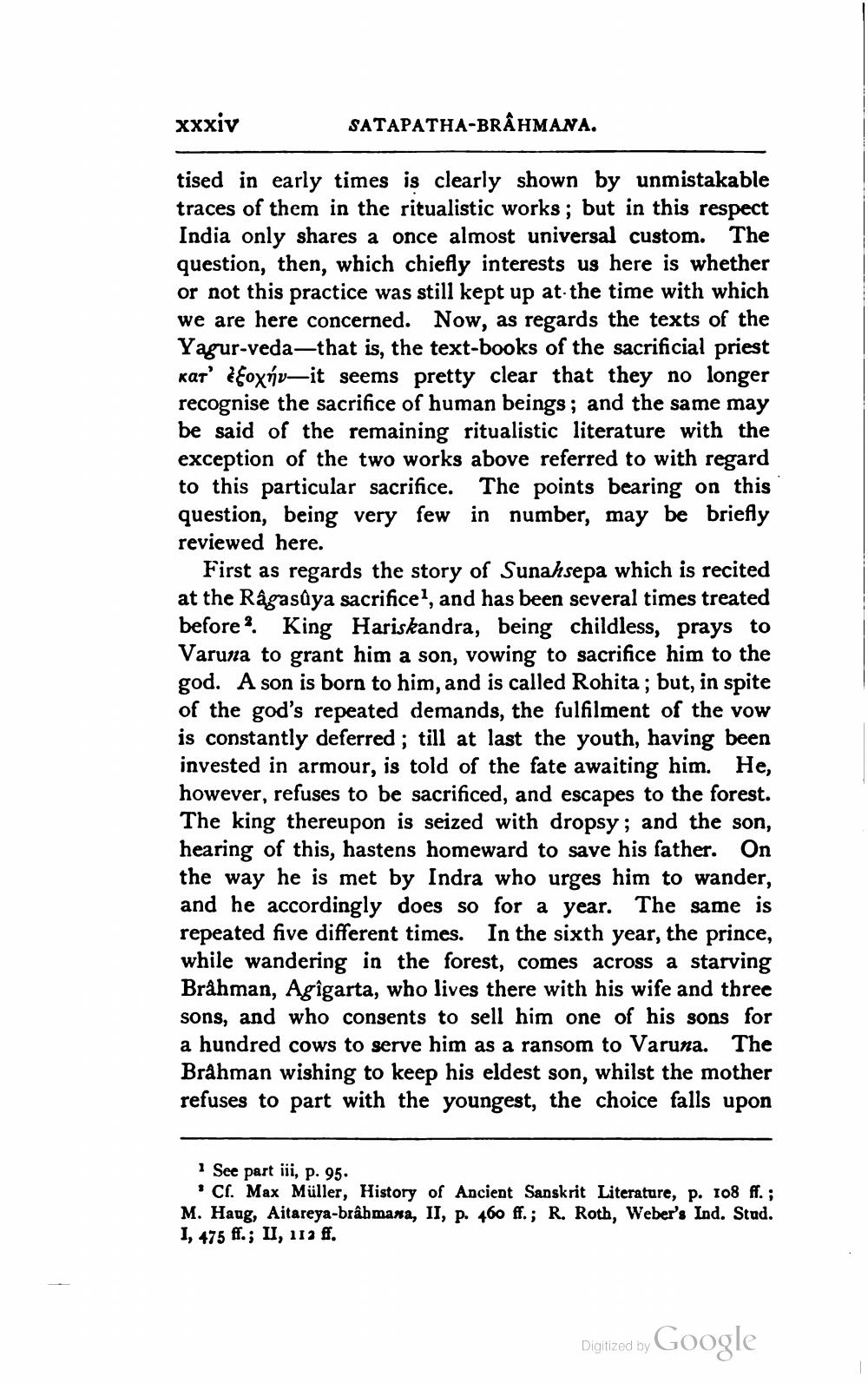________________
xxxiv
SATAPATHA-BRAHMANA.
tised in early times is clearly shown by unmistakable traces of them in the ritualistic works; but in this respect India only shares a once almost universal custom. The question, then, which chiefly interests us here is whether or not this practice was still kept up at the time with which we are here concerned. Now, as regards the texts of the Yagur-veda—that is, the text-books of the sacrificial priest κατ' εξοχήν-it seems pretty clear that they no longer recognise the sacrifice of human beings; and the same may be said of the remaining ritualistic literature with the exception of the two works above referred to with regard to this particular sacrifice. The points bearing on this question, being very few in number, may be briefly reviewed here.
First as regards the story of Sunah sepa which is recited at the Râgasûya sacrifice!, and has been several times treated before? King Hariskandra, being childless, prays to Varuna to grant him a son, vowing to sacrifice him to the god. A son is born to him, and is called Rohita; but, in spite of the god's repeated demands, the fulfilment of the vow is constantly deferred; till at last the youth, having been invested in armour, is told of the fate awaiting him. He, however, refuses to be sacrificed, and escapes to the forest. The king thereupon is seized with dropsy; and the son, hearing of this, hastens homeward to save his father. On the way he is met by Indra who urges him to wander, and he accordingly does so for a year. The same is repeated five different times. In the sixth year, the prince, while wandering in the forest, comes across a starving Bråhman, Agigarta, who lives there with his wife and three sons, and who consents to sell him one of his sons for a hundred cows to serve him as a ransom to Varuna. The Brahman wishing to keep his eldest son, whilst the mother refuses to part with the youngest, the choice falls upon
See part iii, p. 95. • Cl. Max Müller, History of Ancient Sanskrit Literature, p. 108 ff.; M. Haug, Aitareya-brâhmana, II, p. 460 ff.; R. Roth, Weber's Ind. Stad. I, 475 ff.; II, 112 ff.
Digitized by Google




